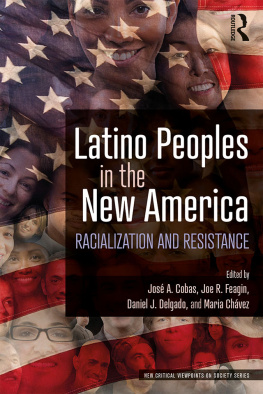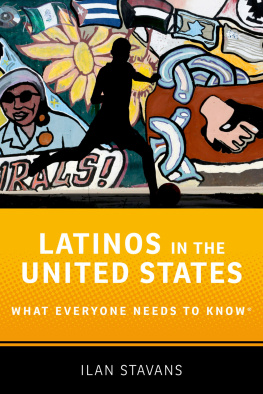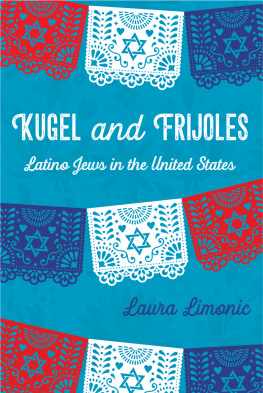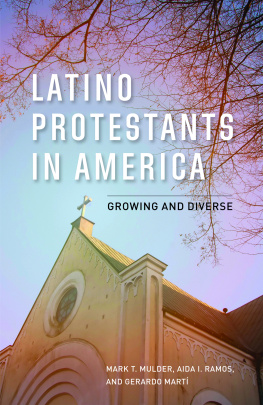


Copyright 2014 by Matt Barreto and Gary M. Segura.
Published in the United States by PublicAffairs,
a Member of the Perseus Books Group
All rights reserved.
No part of this book may be reproduced in any manner whatsoever without written permission except in the case of brief quotations embodied in critical articles and reviews. For information, address PublicAffairs, 250 West 57th Street, 15th Floor, New York, NY 10107.
PublicAffairs books are available at special discounts for bulk purchases in the U.S. by corporations, institutions, and other organizations. For more information, please contact the Special Markets Department at the Perseus Books Group, 2300 Chestnut Street, Suite 200, Philadelphia, PA 19103, call (800) 810-4145, ext. 5000, or e-mail .
Book Design by Jeff Williams
Library of Congress Cataloging-in-Publication Data
Barreto, Matt A.
Latino America : how Americas most dynamic population is poised to transform the politics of the nation / Matt Barreto and Gary M. Segura ; with contributions from Elizabeth Bergman, Loren Collingwood, David Damore, Justin Gross, Blanca Flor Guillen, Sylvia Manzano, Adrian Pantoja, Francisco Pedraza, Gabriel Sanchez, and Ali Valenzuela.First edition.
pages cm
Includes bibliographical references and index.
ISBN 978-1-61039-502-1 (ebooks) 1. Hispanic AmericansPolitics and government. 2. United StatesPolitics and government2009-I. Segura, Gary M., 1963 II. Title.
E184.S75B367 2014
320.973089'68dc23
2014015544
First Edition
10 9 8 7 6 5 4 3 2 1
We dedicate this book
To Juan and Catalina, Enrique James, Ana Victoria, Itati, and Fiby, And to Daniel Javier and Clara Victoria Who represent the future Latino America we study here....
CONTENTS
Sometime in April 2014, somewhere in a hospital in California, a Latino child was born who tipped the demographic scales of Californias new plurality. Latinos displaced non-Hispanic whites as the largest racial/ethnic group in the state. And so, 166 years after the Treaty of Guadalupe Hidalgo brought the Mexican province of Alta California into the United States, Latinos once again became the largest population in the state.
Surprised? Texas will make the same transition sometime before 2020, and Latinos have had a plurality in New Mexico for some time. Latinos are already over 17% of the population of the United States, and that number will grow toward a national plurality over the course of this century. The America that todays infants will die in is going to look very different from the nation in which they were born. Oh, and by the way, more than half of todays children under age five are nonwhite.
The pace of demographic change and its impact on both the racial structure of American society and the future makeup of the electorate are illustrated clearly in . In the 1950 census, the white share of the population reached its peak at just under 90%. And in 1980, when Ronald Reagan was elected president, nearly 80% of all Americans were white. Meanwhile, in 1970, just 4.7% of Americans identified themselves as being of Hispanic ancestry. These populations were concentrated in New York and Chicago (Puerto Rican), Miami (Cuban), and the Southwest, from Texas to California (Mexican). Since 1980, however, the share of all Americans identifying themselves, unambiguously, as white has fallen precipitously, and Latinos, at 17%, are now present in every state and are the largest minority group in more than half of them. Nationally, the Latino population includes not just Mexicans, Puerto Ricans, and Cubans but also large numbers of Salvadorans, Guatemalans, Dominicans, Hondurans, Colombians, and countless others.
TABLE 1.1 Historical Trends in White Identification in the US Census


Source: US Bureau of the Census. For 1800, see US Bureau of the Census, Table 1. United StatesRace and Hispanic Origin: 1790 to 1990, available at: www.census.gov/population/www/documentation/twps0056/tab01.pdf. For 2010, see US Census Bureau, Overview of Race and Hispanic Origin 2010 Census Briefs, March 2011, available at: http://www.census.gov/prod/cen2010/briefs/c2010br-02.pdf (accessed June 1, 2011).

The ethnicity question in the census allowed us to count Hispanics separately from others answering white to the race question. It is ironic in the extreme that Latinos had been previously classified as white since that nominal status did not prevent them from being sent to segregated schools, kept off juries, being refused burial in local cemeteries, and other indignities historically reserved for the nonwhites in American society. White privilege clearly did not extend to Latinos.
The rapid growth of the Latino population will change America in profound ways. In the 1990s, Latino activists were fond of citing the 1992 report that salsa had displaced ketchup as Americas most frequently purchased condiment, but that change really just scratches the cultural surface. Latin food, music, and dance have gone fully mainstream. Lin-Manuel Miranda won the Tony Award for Best Musical in 2008 for In the Heights, a story set in the largely Dominican community of Washington Heights, New York, almost exactly fifty years after West Side Story introduced Americans to Puerto Ricans living in the same city. Yet at the same time, English-language television continues to feature very few Latino lead characters. And although Latinos outnumber African Americans overall in the United States (and in more than half the states), African Americans are far more visible, both culturally and politically. Latinos may have restructured the race discussion in this country, once so powerfully dominated by the black-white dyadic relationship, but it is clear that the Latino story is very much a work in progress.
The central argument of this book is that in the twenty-first century American politics will be shaped, in large measure, by how Latinos are incorporated into the political system. The Latino electoral history of significant inter-election movement over time suggests that Latino population growth will combine with growth in the Latino electorate to present both political parties with new opportunities in their approaches to Latino voters. Such opportunities are not, of course, without precedentthe large-scale incorporation of urban immigrants in the early twentieth century played a significant role in realigning the American electorate and establishing the New Deal coalition, which dominated national politics for two generations.
Next page










